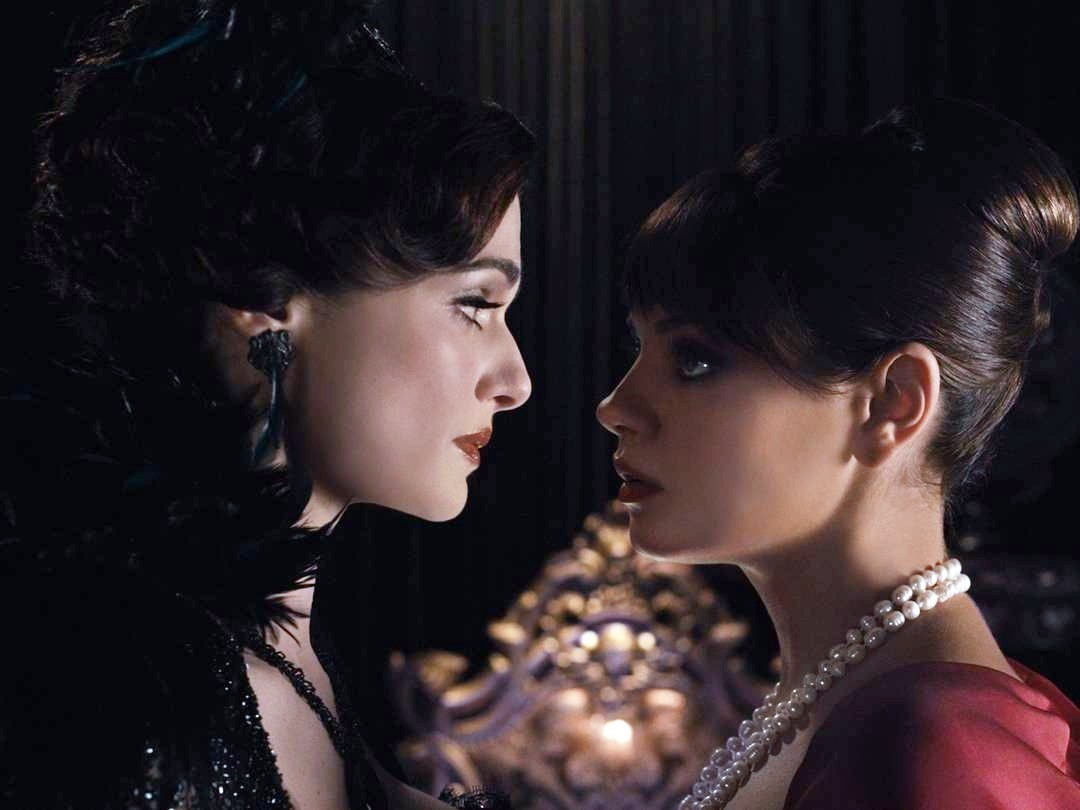My 9-year-old daughter has been having a rough week, although she probably doesn’t know it. I was reading a newish New Yorker profile on Supreme Court Justice Ruth Bader Ginsburg that brought up how recently, and often unsatisfactorily, civil cases have been brought before the court to assert women’s equality. Then I was listening to Facebook COO Sheryl Sandberg talking on NPR about the lack of progress women have been making in reaching leadership positions. And then, to top it all off, we went to see Oz: The Great and Powerful.

Call me dually biased. I was raised on MGM’s 1939 vision of Oz and its inhabitants, and I became a mother during a time when the Disney princess mythology was heavily criticized, if not rejected outright. But even without that background, it would be hard to deny that the Disney-fied version of Baum’s stories takes liberties that are both creepily modern and uncomfortably retro.
One of the great things about The Wizard of Oz is that it represents a child’s perspective. It doesn’t rely on unnecessary plot points to draw in adult viewers, because adults can be just as taken by the reminder of how confusing and joyous and sometimes terrifying life can be for a child. The film didn’t try to wedge in a romantic storyline. And ultimately, the hero is a young woman. She kills two witches!
On both sides of the twister, the female characters of Oz: The Great and Powerful are presented as gullible, naïve, clingy, manipulative, and/or downright wicked. And, despite much talk about their power, Oz’s witches are basically helpless, waiting around for who knows how long for some guy to fall out of the sky and save them from themselves. I was the most disappointed by the story of Theodora, the eventual Wicked Witch of the West, whose wickedness is explained away as a stalkerish over-reaction (prompted by her own sister, of course, because women are, like, SO MEAN to each other). The only “good” witch, Glinda, is the least assertive of the three, banished from her home and unable to do a thing about it until some half-assed con artist shows up. Even when she “wins” against her wicked siblings, it’s on a technicality.
Power balance sidenote: I couldn’t help noticing that the wicked witches, played by Rachel Weisz and Mila Kunis, were the dark-haired, exotic, foreign ones (they even inexplicably let Weisz use her British accent). When I asked my kids after the movie which of the women was the most powerful, my 5-year-old son immediately replied, “The white one!” He meant her dress, but still, she was the whitest in every way. (Side-sidenote: Oz author L. Frank Baum was a known feminist, but his very not-okay positions on Native American relations are a topic for another time.)
Really, the most relevant detail is probably the fact that there is not actually a book called Oz: The Great and Powerful. The plot line was mostly fabricated for the movie. Producer Joe Roth told the Huffington Post “ […] during the years that I spent running Walt Disney Studios — I learned about how hard it was to find a fairy tale with a good strong male protagonist. You’ve got your Sleeping Beauties, your Cinderellas and your Alices. But a fairy tale with a male protagonist is very hard to come by. … Which is why I knew that this was an idea for a movie that was genuinely worth pursuing.” Ah, yes. Because all those other fairy tale protagonists were such independent women and we barely got to appreciate the men who continually rescued them (well, except Alice; she just got high and told everyone what she thought. Funny that I rarely see her in the toy aisle).
It’s not that having a male lead is bad, but what you do to the rest of the characters still matters. When Disney got hold of the Wizard, they imagineered themselves up a pseudo-prequel that combines the worst of modern focus group mentality and old-fashioned gender roles. Congratulations, guys. At least one part of the film accurately pre-dates the original story by 20 years.
Look, I know it’s just a movie. I don’t think the course of feminism is being redirected here. But that’s the problem, really. There was such a great opportunity to update this franchise and infuse it with Baum’s ideas about female gumption that were maybe a little too progressive for 1930s MGM, or at least not lose ground from the girl-power ambitions of the original film. At a time when women are holding steady at a mere 14-percent of corporate leadership positions, continue to underearn men despite higher levels of education, and are still waging legal battles for equality, it’s clear that, more than 100 years after their publication, the original Oz stories are still ahead of our time.